Most birds are defensive of their territories and space and raptors are certainly no exception. Rough-legged Hawks and Northern Harriers both prey heavily on voles (mice-like rodents) so when a new bird of prey comes in to the established hunting territory of another there are often conflicts, with the established bird attempting to drive off the interloper to avoid competition for food resources.
Rough-legged Hawk
As I was photographing this Rough-legged hawk sitting peacefully in a tree I noted a definite change in its demeanor so I looked around and spotted a Northern Harrier speeding toward the hawk from my right. I anticipated that the harrier would “buzz” the roughie and since I was much too close to get both birds in the frame when it happened I decided to concentrate on the reaction of the hawk as the interaction occurred. I never did get the harrier in the frame in any of the shots. In the image above, the roughie hasn’t yet seen the harrier coming in (nor have I).
The incoming Northern Harrier has been spotted
When I noticed this posture change in the roughie I knew something was up, so I looked in the direction the bird was focused on and saw the harrier coming in fast.
Beginning to react
Here the hawk is beginning to react to the swift and aggressive approach of the harrier by beginning to fluff up.
Defensive posture
This shot was taken when the harrier, traveling very fast, was closest to the hawk – roughly three feet. As you can see the roughie was fully prepared to defend itself.
As the harrier is passing by, very close and very fast
Here the harrier has just passed by and is just out of frame to the left.
Still ruffled up
This final shot shows the roughie perhaps two seconds after the harrier has passed – still ruffled up and perturbed but beginning to return to a normal posture.
An important aspect of bird photography is knowing the behavior of your subject and paying close attention to subtle changes in that behavior. That way one can often anticipate and prepare for interesting events that would be very difficult to photograph because they happen so quickly. Because I noticed the behavior change in the hawk as it reacted to the incoming harrier I had the time required to change my camera settings to give me plenty of shutter speed (1/2000 sec) to freeze the action. At my previous shutter speed the fourth and perhaps the fifth image in this series would likely have been somewhat blurred.
Ron


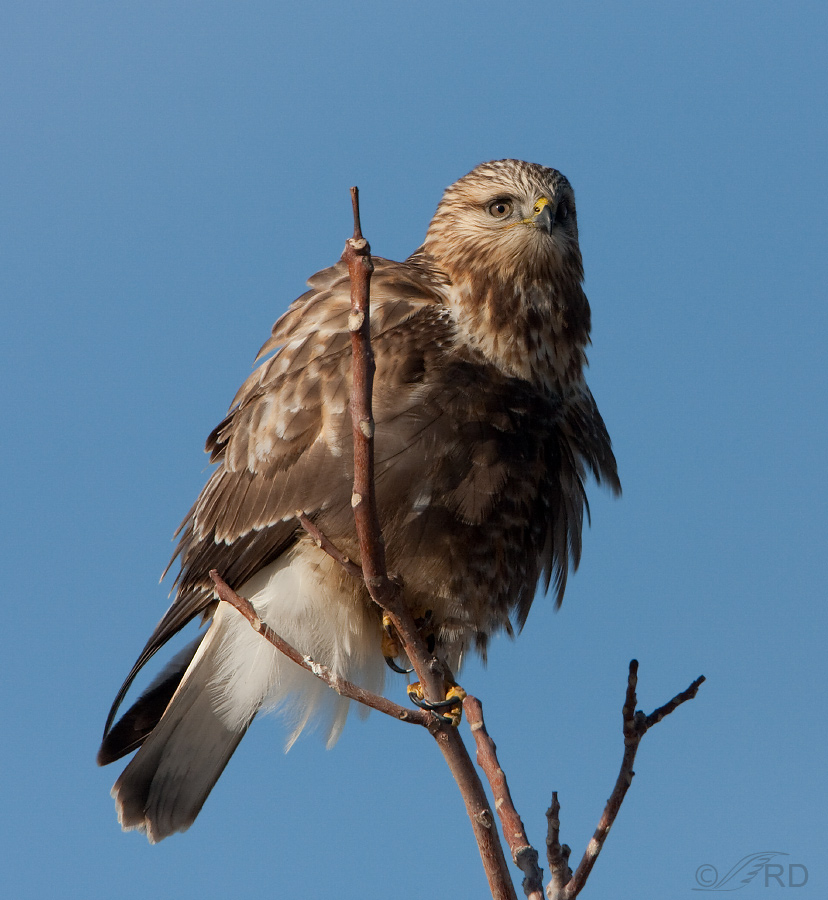
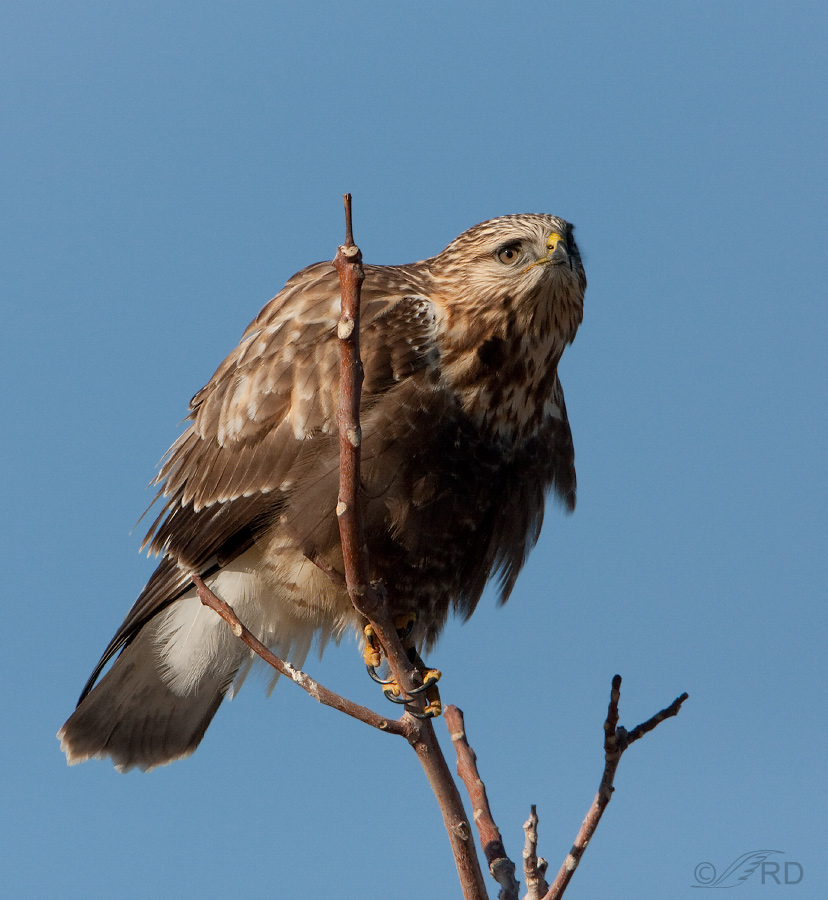
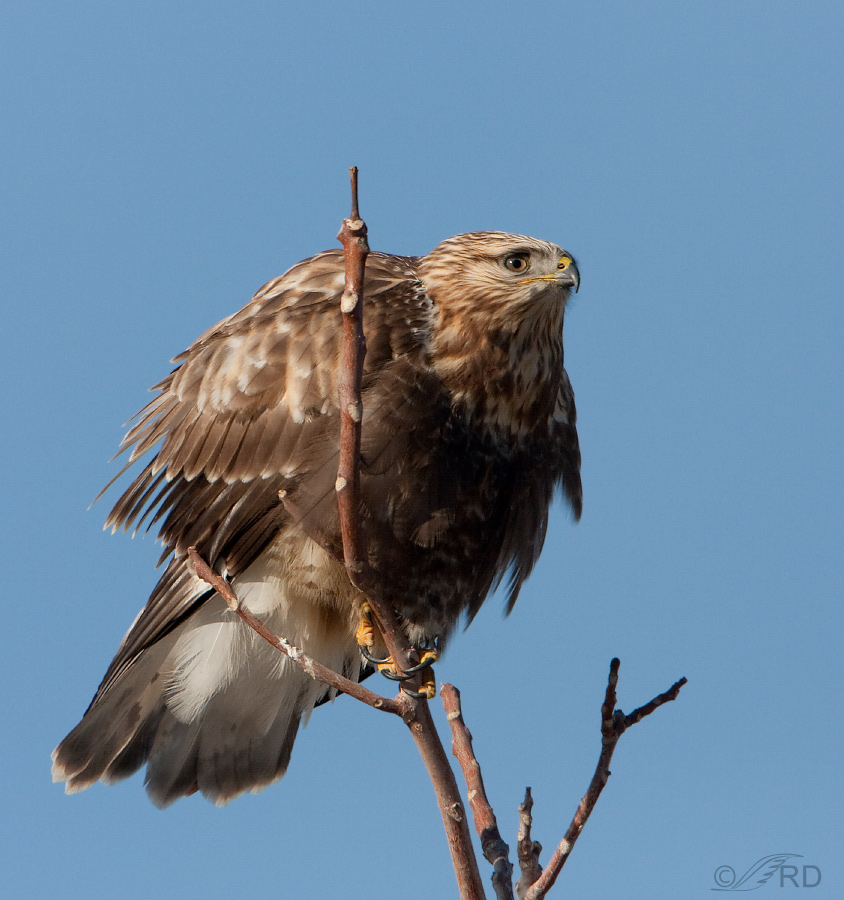
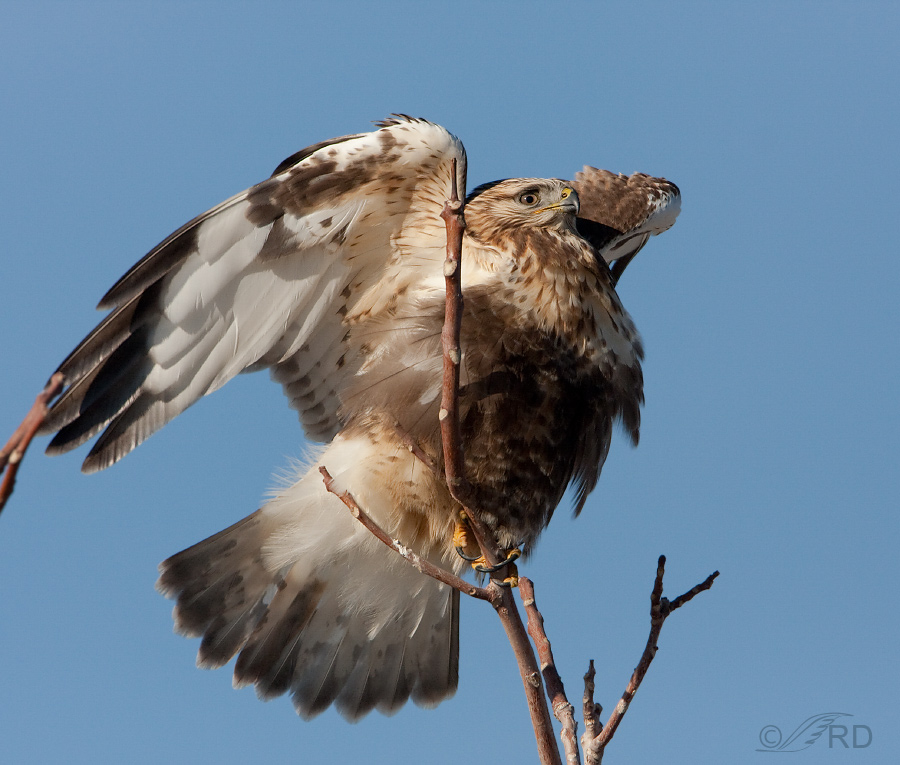
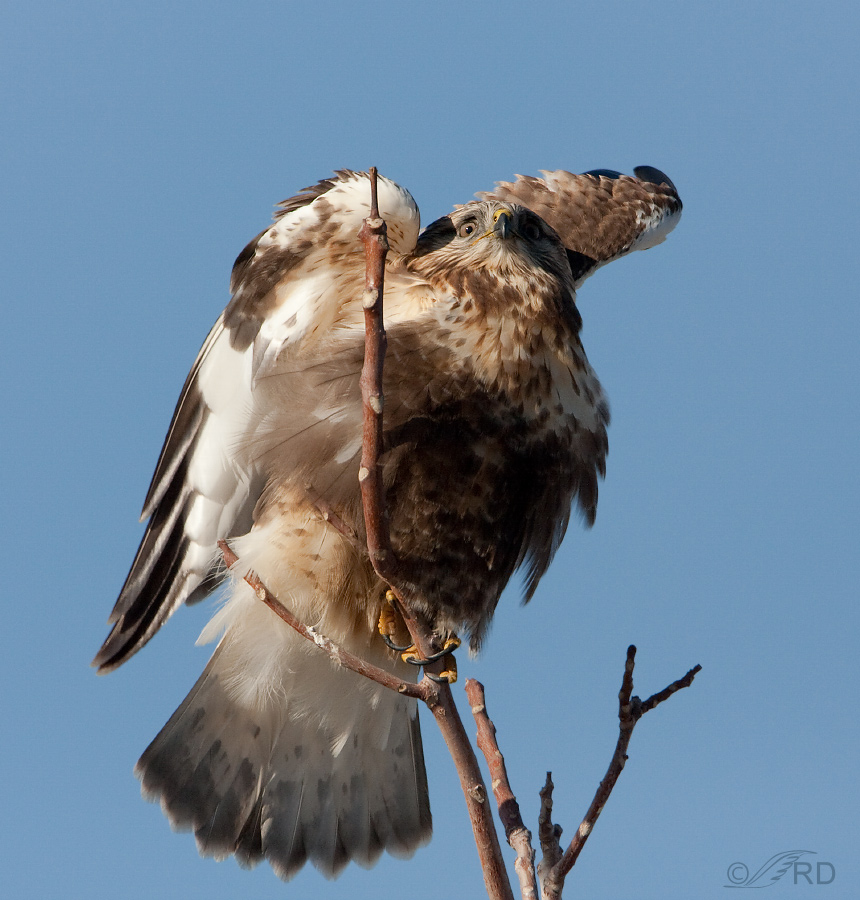
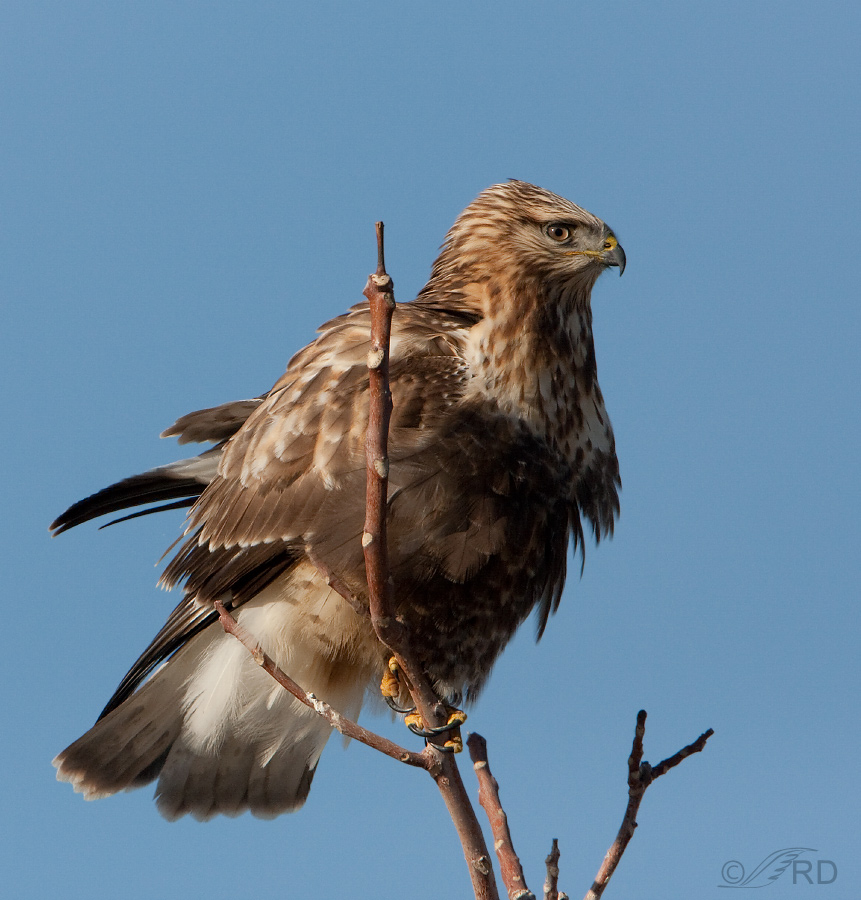
My favorite is wings out, looking ahead and ready to defend itself. I guess another reason they have such good eye sight.